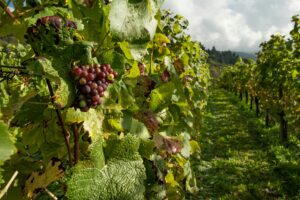Wine tasting and developing your palate isn’t just reserved for wine tasting experiences on wine tours. You can learn how to develop your palate and enjoy lots of good wines in the process right from the comfort of your own home, and below, we show you how.
There are four main steps to consider when refining your palate for wine tasting. These wine tasting practices have been used by sommeliers (wine tasters) over hundreds of years and passed down through the generations. Thankfully, wine tasting skills are no longer reserved for the world’s wine experts; anyone can now benefit from them and significantly improve their wine tasting experience and appreciation.
So, what are these four wine tasting skills?
- See
The first step when learning how to taste wine is sight. The colour of the wine can tell you a lot about what you can expect from its taste. Although the wine world has an array of beautiful colours, even if you often choose the same grape variety, there will be subtle differences in the colour, telling you a little story about its journey, character, body and age.
This wine tasting guide to colours is a basic one. There is a more extensive list and much more to consider regarding the colours of wine and their meaning.
White Wine Colours
- Lemon-Green
- Lemon
- Gold Amber
Rose Wine Colours
- Pale Pink
- Deep Pink
- Salmon
Red Wine Colours
- Tawny
- Garnet
- Ruby
- Purple
To start to understand the colours of wine and how the taste relates to each one, reading the label will give information on the grape variety, region, body, tannin, style and age. Keep notes on each wine you taste and begin to develop a journal about colour, smell, taste and thoughts.
- Smell
The second step is to nose the wine and take in all of the beautiful aromas. The smelling process provides you with lots of information regarding the wine’s history and journey. The aromas of wine tasting can be rather personal to the sniffer; while you may receive scents of chocolate, someone else could get a strong smell of blackcurrants coming through.
Pour the wine, swirl it around the glass for at least 10 seconds to expose it to more oxygen, decrease the alcohol scent and release the aromas within. Left the glass to your nose and breathe in the perfumes rising from the glass.
Aromas of wines are also more complex and cover a spectrum of scents. There are 3 main types of scent including Primary which is fruity and floral, Secondary which are yeasty and cheesy from the winemaking process and Tertiary aromas which come from aging the wine in barrels or the bottle and can be woody, spicy, and nutty.
- Taste
The all-important part of wine tasting is of course, the moment you get to bring the glass to your lips and drink in nature’s nectar. Take a sip of the wine, allow it to circulate through your mouth as you bring in oxygen as if you are sucking through a straw. Pause to allow the information to be absorbed, and then consider what flavours you can detect.
- Savour
You can then choose to either swallow or discard the wine depending on your preference and whether you need to limit the alcohol if tasting several wines in one wine tasting experience. This is the time where you pause to reflect on what you have learnt from the wine. Does the taste match the aromas? Is it bitter, sweet, a slightly sour wine or salty? Too dry? Enjoyably sweet? Astringent or smooth? Does the taste change from the beginning, middle and end? How did the wine make you feel? Was it quaffable on its own, or would it be better paired with a particular meal?
There you have the basics of wine tasting and developing your palate to enjoy wine to its full potential. Whether you’re drinking a 2014 Coche-dury, Corton-charlemagne Grand Cru or a good quality Châteauneuf-du-Pape from your local supermarket, you can use this wine guide to help refine your palate and increase your knowledge of wines.







